Related Research Articles

Pieter van Vollenhoven Jr. is the husband of Princess Margriet of the Netherlands and a member, by marriage, of the Dutch royal house.

Het Parool is an Amsterdam-based daily newspaper. It was first published on 10 February 1941 as a resistance paper during the German occupation of the Netherlands (1940–1945). In English, its name means The Password or The Motto.

Opzij is a mainstream Dutch feminist monthly magazine. The title means "out of the way!"
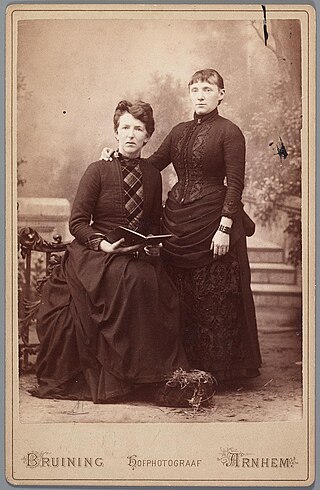
Titia Klasina Elisabeth van der Tuuk, commonly known as Titia van der Tuuk, was a Dutch feminist and socialist. She was born in 't Zandt, Groningen to a preacher and a writer of children's literature. She initially worked as a teacher, but had to give up her profession due to deafness and hostility toward her because she was an avowed atheist. From 1885 onward, she started translating foreign literature into Dutch and writing children's literature and historic novels. She was passionate in her activism for atheism, teetotalism, vegetarianism and pacifism. She often used the pseudonym Vitalis. She was never married and lived openly with her female partner. She died in Zeist, age 84.
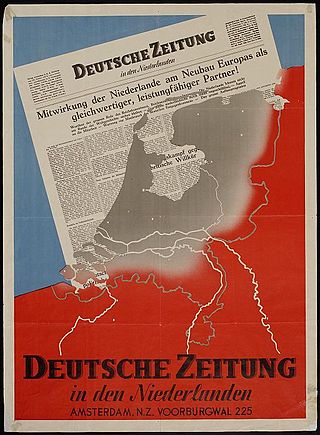
The Deutsche Zeitung in den Niederlanden was a German-language nationwide newspaper based in Amsterdam, which was published during almost the entire occupation of the Netherlands in World War II from June 5, 1940 to May 5, 1945, the day of the German capitulation in the "Fortress Holland". Its objective was to influence the public opinion in the Netherlands, especially the one of the Germans in this country.
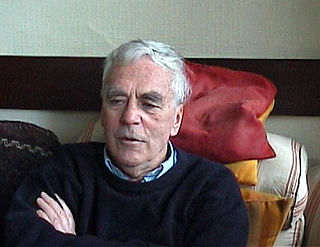
Johannes Jacobus Voskuil was a Dutch novelist known best for his epic novel Het Bureau. In 1997 he won the Ferdinand Bordewijk Prijs for his novels Meneer Beerta and Vuile handen, and in 1998 the Libris Prize for Het bureau 3: Plankton.
Jacobus Ruurd "Jaap" Bruijn, was a Dutch maritime historian. He was professor of maritime history at the University of Leiden from 1979 until his retirement in 2003. During his 41-year teaching career as The Netherlands' only university professor of maritime history, he guided the doctoral theses of at least 49 graduate students.

Wim Hora Adema was a Dutch author of children's literature and a feminist, notable for being the co-founder of Opzij, founded in 1972 as a radical feminist monthly magazine. She was one of the best-known women of the Dutch second wave of feminism.
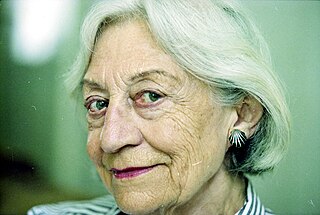
Wina Born-Meijer was a Dutch journalist. She is often named as de moeder van de Nederlandse gastronomie. She has written about a hundred cookbooks and countless articles in magazines, like Margriet and Avenue.

Clara Gertrud Wichmann was a German–Dutch lawyer and anarchist feminist activist, who became a leading advocate of criminal justice reform and prison abolition in the Netherlands.

Viva (1975–2021) was a weekly fashion magazine for women, published in the Netherlands.

Man Vrouw Maatschappij was a Dutch feminist action group founded in October 1968 by Joke Smit and Hedy d'Ancona. The group emerged following the publication of Smit's influential feminist article, Het onbehagen bij de vrouw, in November 1967.
Beatrijs: Katholiek weekblad voor de vrouw was a Dutch Catholic weekly magazine for women. Founded in 1939, it was taken over by Libelle in 1967.
LGBT Literature in the Dutch-language area comprises the works from writers from de Lage Landen, that is Flanders and the Netherlands, using themes or characters that form a part of, or are related to, sexual diversity. According to Gerrit Komrij qualifying for at least two of the following characteristics makes someone a LGBT author:

Henk van der Meijden is a Dutch journalist and producer of theater and circus acts. Known as the "godfather" of Dutch gossip journalism, he founded a weekly gossip magazine, Privé, and edits the gossip pages of De Telegraaf.
In the Netherlands, a friendship contract is an agreement which regulates the consequences of a social relationship between two or more persons under family law as well as property law. Such a contract has no prescribed form. From an evidential point of view a written or notarial form is preferred. In addition, parties are in principle (see article 3:40 of the Dutch Civil Code free to determine the content of their agreement. For example, a tangible or intangible duty of care can be established, a power of attorney can be granted in case a party can no longer act on his own behalf, and an arrangement can be made for the event that one party obtains a good that, in whole or in part, is financed with assets of the other. In the Dutch law of persons and Dutch family law, there is no legal effect attached to friendship contracts; this not expected to change in the near future. The friendship contract is therefore currently governed by general Dutch contract and property law.
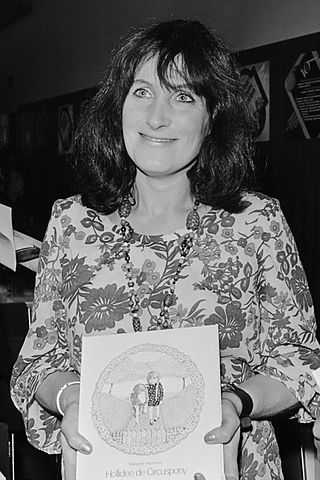
Margaretha Henrica Gerardus Maria Heijmans was a Dutch writer and illustrator of children's literature.

Bertha "Betsy" Bakker-Nort was a Dutch lawyer and politician who served as a member of the House of Representatives for the Free-thinking Democratic League (VDB) from 1922 to 1942.

Maaike Meijer is a Dutch literary scholar. She is a Professor emeritus of Maastricht University.
Censorship in the Dutch East Indies was significantly stricter than in the Netherlands, as the freedom of the press guaranteed in the Constitution of the Netherlands did not apply in the country's overseas colonies. Before the twentieth century, official censorship focused mainly on Dutch-language materials, aiming at protecting the trade and business interests of the colony and the reputation of colonial officials. In the early twentieth century, with the rise of Indonesian nationalism, censorship also encompassed materials printed in local languages such as Malay and Javanese, and enacted a repressive system of arrests, surveillance and deportations to combat anti-colonial sentiment.
References
- ↑ Jacco Hakfoort; Jürgen Weigand. "Magazine Publishing - A Quiet Life ?The Dutch Market for Consumer Magazines" (PDF). CPB Netherlands Bureau for Economic Policy Analysis. The Hague. Retrieved 28 June 2016.
- ↑ Gijs van Wulfen (2013). "What's Your Innovation Focus?" (Book chapter). Innovation Management. Retrieved 16 May 2015.
- ↑ In the 1970s the column provided the material for a sociological investigation into shifting standards for morality and civility. See El 46.
- 1 2 3 Hülsken 59.
- ↑ Roy Sprangers (25 October 2012). "Eerste editie van Weekblad Donald Duck". Lsgeschiedenis (in Dutch). Retrieved 31 May 2014.
- 1 2 3 Hülsken 61.
- ↑ Meijer 47.
- ↑ Meijer 310.
- ↑ Meijer 180.
- 1 2 Heleen Crul (5 August 2009). "Margriet emancipeerde vrouwen". de Volkskrant . Dutch. Retrieved 30 May 2014.
- ↑ Meijer 169, 320.
- ↑ Raad voor Maatschappelijke Ontwikkeling 50.
- ↑ "Concentration and diversity of the Dutch media in 2001" (PDF). The Netherlands Media Authority. September 2002. Archived from the original (PDF) on 7 February 2015. Retrieved 9 May 2015.
- ↑ David Machin; Theo Van Leeuwen (17 May 2007). Global Media Discourse: A Critical Introduction. Routledge. p. 39. ISBN 978-1-134-24090-6 . Retrieved 1 May 2015.
- ↑ Kempen 404.
- ↑ "Ten things you didn't know about prime minister Mark Rutte". Dutch News. 3 November 2015. Retrieved 14 March 2017.
Bibliography
- El, Carla van (2002). Figuraties en verklaringen: stijlgebonden schoolvorming in de Nederlandse sociologie na 1968. Het Spinhuis. ISBN 9789052600109.
- Hülsken, Marloes (2010). Kiezen voor kinderen?: vrouwentijdschriften en hun lezeressen over het katholieke huwelijksleven, 1950-1975. Verloren. ISBN 9789087041731.
- Kempen, Ric van (2006). "Relatiemedia dragen ook events en incentives: Geen incidentele uitspatting, maar strategische keuze". In Sak van den Boom, Jan Mars (ed.). Relatiemedia (in Dutch). Pearson. pp. 395–421. ISBN 9789043011327.
- Meijer, Irene Costera (1996). Het persoonlijke wordt politiek: feministische bewustwording in Nederland, 1965-1980. Het Spinhuis. ISBN 9789055890521.
- Raad voor Maatschappelijke Ontwikkeling (2001). Aansprekend opvoeden (in Dutch). RMO. ISBN 9789012093194.